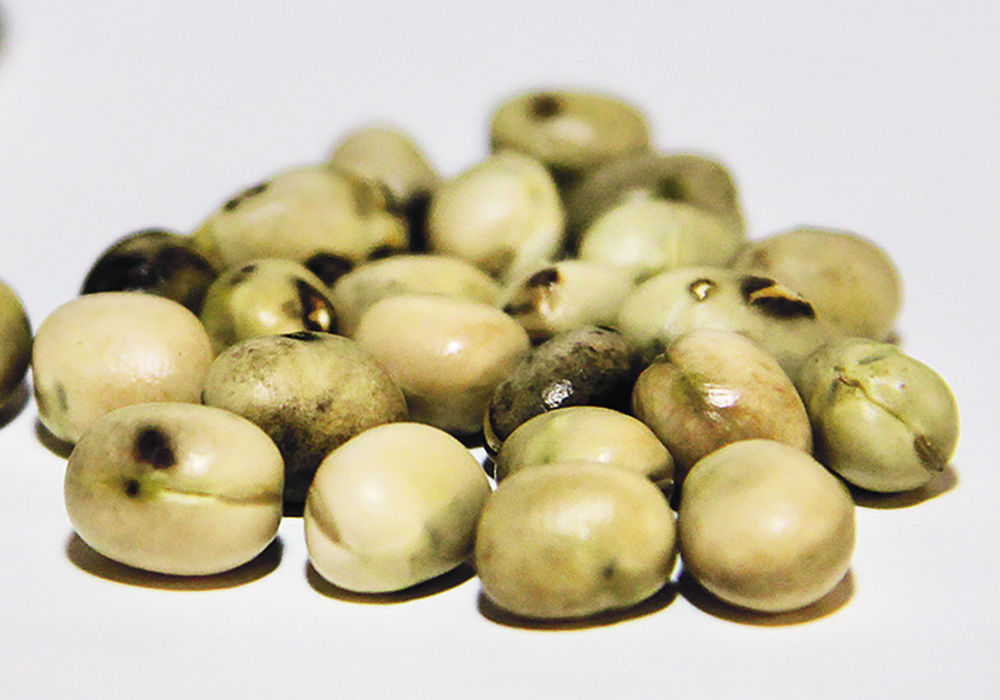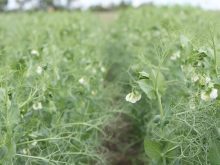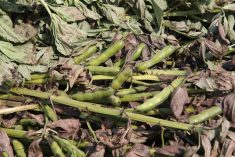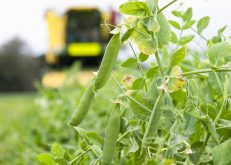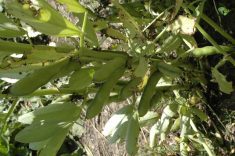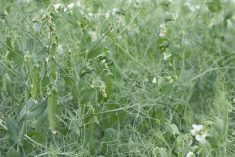BRANDON — A shift toward pulse crops could be the seeding trend of 2024.
Agriculture Canada is forecasting more acres of peas, lentils and other pulses this spring because those crops may steal acres from canola.
“Peas will be up five percent, lentils eight percent and chickpeas 17 percent compared to last year,” The Western Producer reported Jan. 23, citing stats from Agriculture Canada’s Outlook for Principal Field Crops.
Another pulse crop could also have a good year in 2024.
Read Also
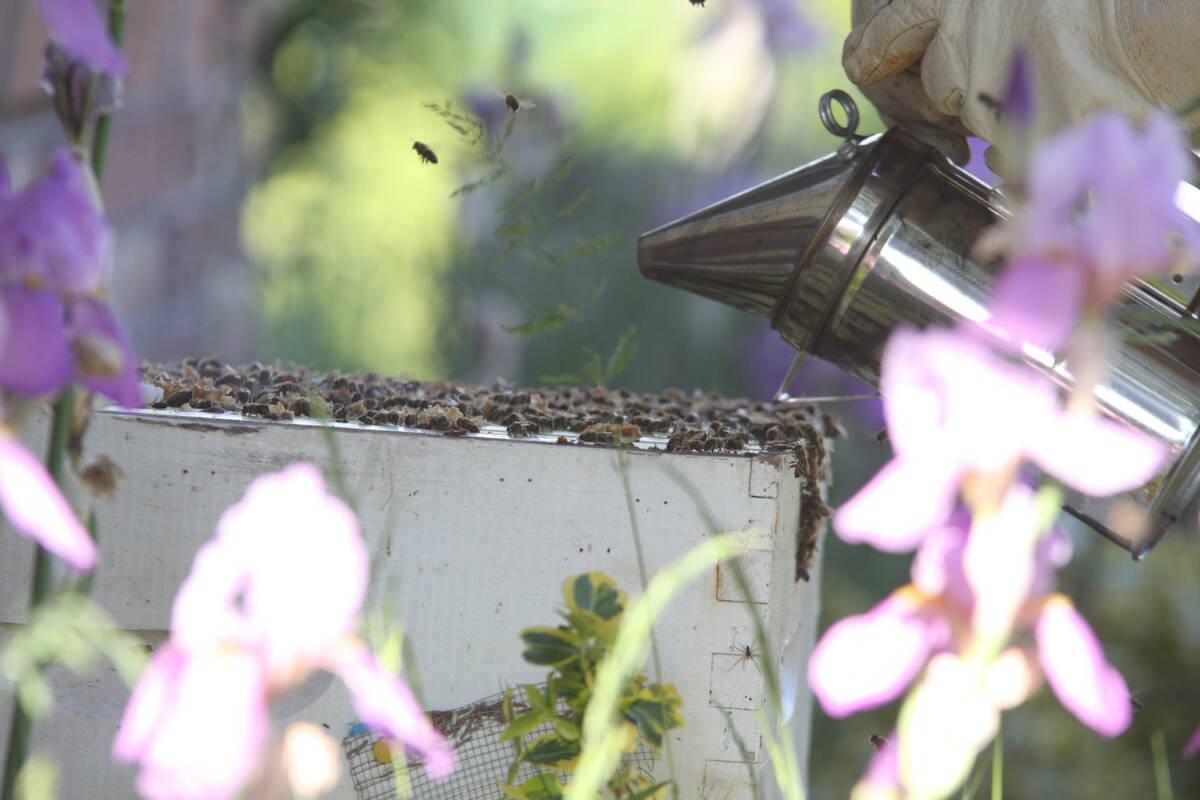
Manitoba beekeepers battle for survival
Honeybee colony losses have hit 43 per cent, making 2025 the latest in a string of poor bee survival years for Manitoba’s honey producers
More growers may opt for fababeans in their crop rotation, said Kendra Meier, chief operating officer of HPS Food & Ingredients, a Saskatoon company.
“Yes. There’s definitely a lot more guys looking for diversity … now that prices have started to come down a bit (for wheat and canola),” Meier said at the HPS booth at Manitoba Ag Days, a trade show held mid-January in Brandon.
HPS Food & Ingredients contracts fababean production. At Ag Days, Meier was offering $10 to $12 per bushel to growers willing to produce fababeans in 2024.
Those prices may attract more producers and could push acres back up to levels from 2021.
Statistics Canada data shows that $18 to $20 per bu. canola dragged down fababean production over the last two years:
- Canadian acres in 2021 — 121,000
- 2022 — 72,000
- 2023 — 91,000
Most of the fababean acres are in Saskatchewan and Alberta.
Now that canola has dropped below $14 per bu., Agriculture Canada is forecasting that canola acres will decline this spring. It’s difficult in January to know exactly what that means for other crops, but fababeans are an option for growers in regions that may be too wet for other pulse crops.
“They love moisture … and that’s where they kind of replace peas, in areas where they have aphanomyces and root rot issues,” Meier said, adding fababeans have strong yield potential when there is sufficient rainfall.
“When you have a lot of moisture … you can be easily be in the 70 to 90 bu. range.”
In a drier year, yields in the 40s are more likely.
In the past, most of the fababeans grown in Western Canada were sold into the livestock feed market — that is, low-tannin fababeans because fababeans with tannins are difficult for pigs to digest.
HPS and other companies are now focusing on opportunities in food and ingredients. More companies and processors are using fababeans as a source of plant protein.
“There’s a lot of excitement…. There is a lot of interest on the food side,” Meier said at Ag Days.
Fababeans have an advantage over other pulses because the protein is whiter and has a neutral flavour, so food processors can use it as an ingredient without affecting the taste or colour of the final product.
Previously, the challenge with fababeans was vicine and co-vincine, which are glycosides found in plants.
A small percentage of the population cannot tolerate vicine or co-vicine because they lack an enzyme called G6PD in their red blood cells. Consuming fababeans can cause a disease called favism. Symptoms from consuming fababeans include headaches, nausea, vomiting, abdominal pain and fever.
“More than 100 million people worldwide are genetically deficient in G6PD,” says a Cornell University website.
The positive news for the fababean industry is that crop breeders have solved the vicine issue.
They have developed varieties that are low in vicine, which can be safely used as a food ingredient.
“With the new genetics … it’s really opened up a lot of market opportunities in the food industry,” Meier said, adding their contracted production of fababeans is sold to food and ingredient companies, including firms in the plant protein industry.
HPS Food & Ingredients has a sister company called Harvest Genetics International, which owns the rights to several fababean varieties with low vicine and co-vicine.
One of them is Navi, which will be the majority of fababean production for the company in 2024.
Another one was developed by the University of Saskatchewan’s Crop Development Centre — CDC 1142-16.
It is being replicated this year so that enough seed is available in 2025.
Their latest low vicine fababean, the R-Series, is smaller and has a rounder shape.
“That’s really key for the processors,” Meier said.
“Now that we’re working on genetics that are smaller and rounder, it’s becoming more appealing … for them.”
The R-Series will likely enter the market in a few years.
Livestock feed is still a significant market for fababeans, but the addition of the food market creates new and possibly sizable demand for western Canadian producers.
“Being an alternative to peas …. that helps the majority of growers with their pulse rotation,” Meier said.
“(Now) there are more markets out there (for fababeans).”


